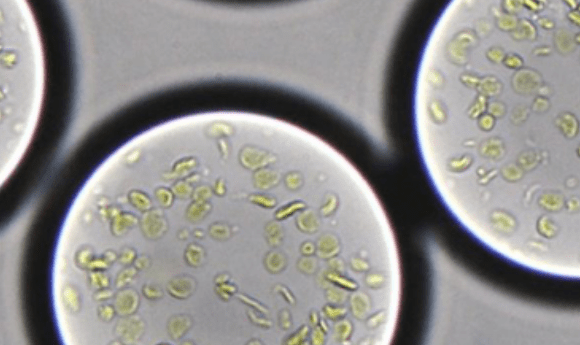Artificial chloroplast project sees lift off

Bioengineered artificial chloroplasts take us a step further toward clean energy and carbon-based products.
The interdisciplinary, multi-lab MaxSynBio network has announced the successful creation of ‘artificial chloroplasts’ – cell-sized, photosynthesizing compartments. This bottom-up approach to bioengineering overcomes some of the constraints faced with genetically engineered organisms, and could help tackle climate change, specifically the problem of rising atmospheric CO2 levels.
The concept of building chloroplasts has been touted as the “Apollo project of our time” owing to their potential for clean energy applications. However, chloroplasts are complex to mimic. The team – led by Tobias Erb (Max Planck Institute for Terrestrial Microbiology, Marburg, Germany) – harnessed two relatively new technology developments – a synthetic biology approach, and microfluidics.
“We first needed an energy module that would allow us to power chemical reactions in a sustainable fashion. In photosynthesis, chloroplast membranes provide the energy for carbon dioxide fixation, and we planned to exploit this ability, ” explained Erb.
The team utilized the photosynthesis apparatus of the spinach plant, which was able to drive single reactions and complex reaction networks using light.

New technologies to solve the Earth’s oldest problems
Fifty years on from the first Earth Day, the Wyss Institute is demonstrating how applying novel technologies to old ideas could finally tackle these environmental problems.
For the dark reaction, the team created an artificial metabolic module, the CETCH cycle. This comprises 18 biocatalysts capable of converting CO2 more efficiently than in natural plants. These systems allowed the team to achieve light-controlled CO2 fixation in vitro.
The microfluidic platform encapsulates the semi-synthetic membranes into thousands of standardized, cell-like droplets, providing control via light and allowing them to be individually equipped with specific properties.
The team went on to show that they could achieve a CO2 binding rate 100-times faster than previous synthetic approaches.
“The platform allows us to realize novel solutions that nature has not explored during evolution,” commented Erb. “In the long term, life-like systems could be applied to practically all technological areas, including material science, biotechnology and medicine – we are only at the beginning of this exciting development.”